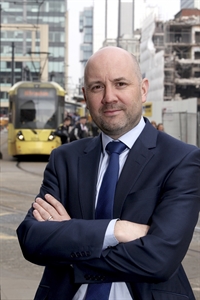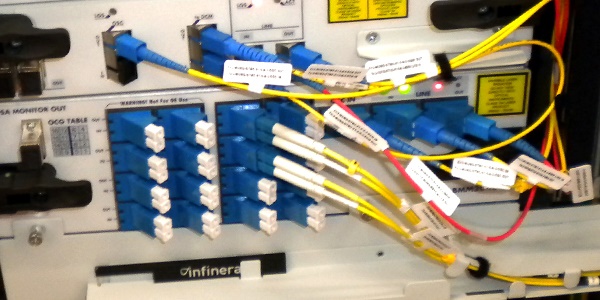01.08.15
A transportation network for the next generation
Source: RTM Aug/Sep 15
 The UK’s rail and wider transportation sectors are undergoing a communications revolution. Set to deliver a huge number of industry benefits, a series of vital upgrades could even act as a catalyst for social change. Jason Pearce, chief executive of ADComms, explains the plans behind the upgrades.
The UK’s rail and wider transportation sectors are undergoing a communications revolution. Set to deliver a huge number of industry benefits, a series of vital upgrades could even act as a catalyst for social change. Jason Pearce, chief executive of ADComms, explains the plans behind the upgrades.
The UK’s railways are enjoying an exciting period of technological change and growth. Substantial investment into technology and communication upgrades are cementing both the industry’s future and its position as a world-class network.
Firstly, Network Rail’s substantial investment in its new IP (internet protocol) network, FTNx. Working with the existing GSM-R radio network, this fundamental telecoms infrastructure will start with a signalling infrastructure upgrade to ETCS (European Train Control System, a crucial component of ERTMS). This will increase the safety, reliability and capacity of the network to meet increasing passenger numbers and journey demand. This will enable infrastructure owners to manage their networks more effectively and to gain a better return on investment.
We all expect our passenger experience to be first class. Operators are very much aware of this, not least through the regular passenger feedback they gain. Technology investment represents one of the biggest opportunities for operators to make a huge impact on improving the customer’s rail experience.
A catalyst for social change
With road traffic on the rise, the delivery of an effective transport network can drive real social change in the way we live. On a rail network already at capacity, the best way to meet demand is to implement technologies that will enable more trains to run on existing tracks. It’s the only way to ensure the rail industry will deliver the estimated three billion annual journeys that will be taken by 2035.
The project we have recently won to install GSM-R coverage across Heathrow Airport’s rail tunnel infrastructure will see us working with Network Rail to commission one of the UK’s first functioning ETCS-compliant systems. The introduction of more rail services linked to Heathrow Airport will move those passengers faster and more safely to their onward destinations.
Enhanced data communication will change how the UK works
We believe enhanced data communication has the power to change the way the UK works. Indeed, this is why it’s exciting to consider what technology we will use on HS2 – it could even be 8G! Whatever the technology is, it’s important that systems integrators and technology partners are collaborating to support the new planned infrastructure so that it meets our future requirements and expectations.

Meanwhile, on-board digital upgrades bring an opportunity for operators to ensure the high National Rail Passenger Survey (NRPS) scores that are vital to franchise renewal. The process of travel will increasingly become a digitised experience over the next two to five years. Indeed, this will certainly help to drive passenger desire to use trains in the future.
As a business, we’ve recognised how technology will drive increasing convergence between operators and owners within rail. We have recently developed our own real-time passenger information and wi-fi systems and have installed equipment on Porterbrook’s rebuilt Class 144 ‘Evolution’ Pacer. We’re trying to help create a vision of an enhanced passenger experience prototype, which is undergoing testing with Northern Rail. Our upgrades ensure passengers have a more comfortable, connected and informed experience on board – all provided at minimal cost and inconvenience to the operator – as well as offering an opportunity to build on their NRPS scores.
Necessary next steps
For these planned upgrades to be a success, technological integration is a vital next step. Effective data communication needs a top-class telecoms network at its heart. Greater investment in telecoms infrastructure is also crucial. The Department for Transport has pledged £50m to ensure wi-fi is available on selected services from 2017. It’s a start, but it won’t deliver a solution. The technology exists to make this happen, but the cost is most likely going to have to be met by a combined private and public sector funding model.
The future of rail in the UK is tremendously exciting, and with today’s technology, we can deliver the railway vision we all desire. The challenge lies in all parts of the industry working in collaboration to deliver this vision.